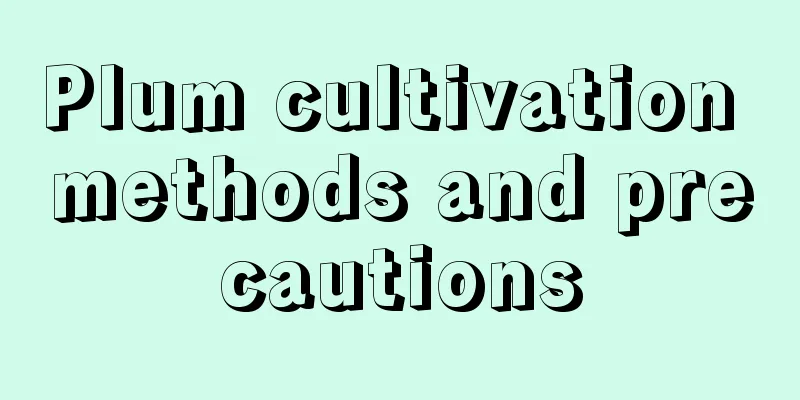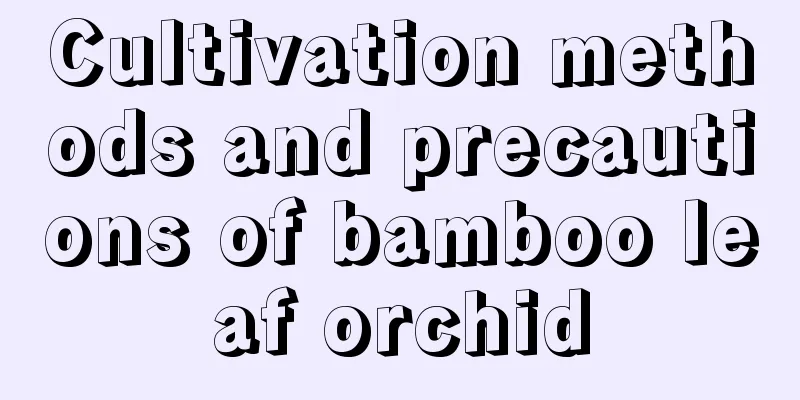Hydrangea cultivation methods and precautions

1. Maintenance methods1. Temperature: The temperature suitable for its development is between 18 and 28 degrees. The temperature for wintering cannot be lower than 5 degrees. Because of its cold-intolerant characteristics, black rot of branches and leaves will occur if the temperature is lower than the limit temperature. After the flowers bloom, the temperature should be maintained at 16 degrees. This can prolong the flowering period. Too high a maintenance temperature will shorten the flowering period. 2. Watering: Its branches, leaves and flowers are relatively large, and it requires more water. It needs to be watered every morning and evening during the growing period. Water needs to be controlled in winter, and two or three waterings are sufficient. When watering, control the amount and just water until the soil is completely moist. 3. Fertilization: Before planting, you need to add base fertilizer to the soil. It consumes nutrients quickly. During the growth period, you need to fertilize once every half a month. You can choose diluted fertilizer cake water as the fertilizer. To prevent the soil from becoming alkaline, you can add 2% ferrous sulfate to the fertilizer when applying fertilizer. Adding potassium superphosphate solution to the water before flowering can help the flowers color and make them brighter. 4. Light: It is not suitable for long-term maintenance in a sunny environment. It needs to be maintained in a relatively cool place in summer to prevent the branches and leaves from being burned. After September, the light will gradually weaken. At this time, it can be moved to a place with more light for cultivation. 2. Breeding techniques1. Reproduction: In April and May, select the tender spikes at the top of hydrangea as cuttings, insert them into the prepared fine soil and sand bed, water them enough, and place them in a dark environment with a temperature of about 25 degrees. They will grow roots in about 20 days. 2. Pruning: In March, you need to cut off the dead branches and leaves at the base, leaving only three or four buds on each main branch. 3. Problem Diagnosis1. Pests: The diseases it is infected with mainly include powdery mildew and leaf spot. After discovering such diseases, add 65% of mancozeb wettable powder to water and spray it for treatment. 2. No flowering: If the plant does not bloom, it may be due to excessive nitrogen fertilizer. If there is too little phosphorus and potassium fertilizers, this problem can be solved by reducing nitrogen fertilizers and increasing phosphorus and potassium fertilizers. IV. Other issues1. Can it be grown at home? Its flowers can easily cause allergies in people with sensitive constitutions. If someone in your family is sensitive to pollen, it is not recommended to grow it. If there is no one with allergies, it can be grown. 2. Toxicity: Its pollen and leaves are not poisonous, but the juice is poisonous. As long as you don't pick it, there will generally be no problem. If it accidentally comes into contact with your skin, wash it with soap and water, then seek medical attention as soon as possible. |
<<: The breeding methods and precautions of Cross Star Brocade
>>: Tomato cultivation methods and precautions
Recommend
Can mushroom residue be used as fertilizer?
Mushroom residue as fertilizer Mushroom residue c...
How to grow Clivia
1. Temperature Clivia is afraid of both extreme h...
When is the best time to prune poplars?
Poplar pruning time The best time to prune poplar...
Is a sunflower suitable for a large or small pot?
Should I use a large or small pot for sunflowers?...
The growth environment and local conditions of Dendrobium officinale
Dendrobium officinale growth environment and cond...
Maintenance measures for the pine tree and soil requirements
1. Maintenance measures 1. Plenty of sunlight: Th...
How to prune large-leaf begonia (pruning time and method)
Big Leaf Begonia Pruning Time The time for prunin...
Is Vinca roseus poisonous?
Is Vinca Rosea poisonous? Yes, periwinkle is pois...
The secret to raising succulents: they will get extremely fat in 3 weeks. The more you abuse them, the crazier they will grow!
Control type 1: Soil control method If you want t...
The main value of Sedum sedum
Garden value Sedum concha is a smaller and shorte...
How to care for orange trees in winter
Are orange trees afraid of frost? Orange trees ca...
How to propagate bougainvillea from cuttings
1. Select branches Bougainvillea is usually propa...
How to trim and propagate coleus
1. Pruning method 1. Pinching: When pruning coleu...
How to grow grape hyacinth
1. Breeding environment 1. Temperature: Provide a...
Staghorn fern pests and diseases and their control methods
Major diseases of Staghorn fern Leaf blight and i...









